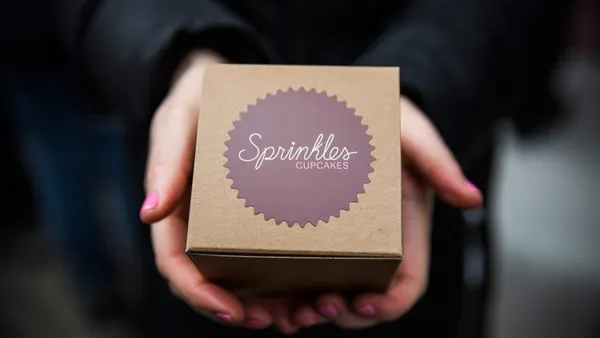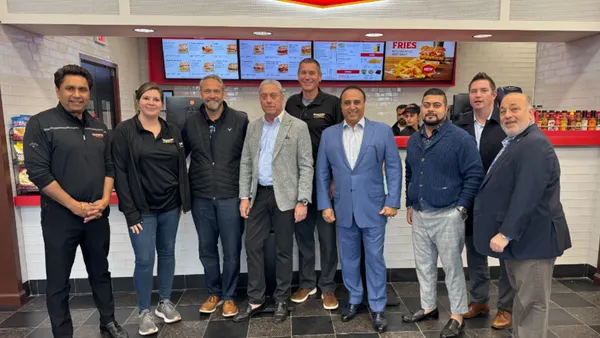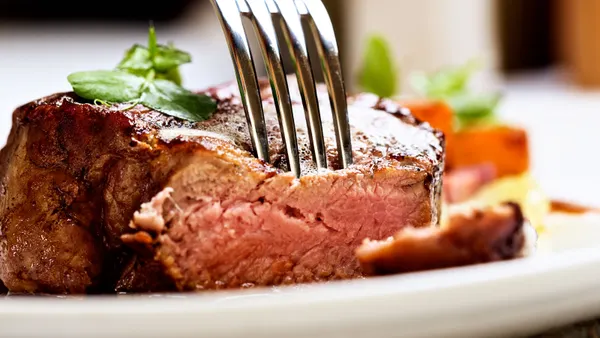Dive Brief:
- Wingstop’s domestic same-store sales increased nearly 32% and system-wide sales grew by 37% to $509 million during Q2 2020, marking the brand’s best quarter since its IPO in 2015, according to an earnings summary emailed to Restaurant Dive.
- Same-store sales for Q3 to date are up 28.7%, Charlie Morrison, Wingstop chairman and CEO, said during a Wednesday earnings call with investors.
- Digital sales increased to nearly 64% of domestic sales during the quarter compared to 33% of domestic sales during Q2 2019.
Dive Insight:
Wingstop’s double-digit sales growth makes it one of only a few chains to profit during the novel coronavirus pandemic. Even Chipotle, which has seen impressive digital sales growth of over 200% during Q2 2020, declined same-store sales by 9.8% for the first time in about three years. Starbucks and McDonald's, the two largest chains in the country, both reported global double-digit same-store sales declines during the pandemic as well.
"We have made such investments in our digital and delivery capabilities that it’s so easy to access our products," Morrison said. "[Our] product fits so well with all occasions, but more importantly [with] family occasions with the variety that we offer."
The company’s goal has been to make 100% of its transactions digital, and its tech investments allowed the chain to quickly pivot to 100% off-premise when dining rooms were forced to close. It has also been updating its restaurant design to include mobile pickup shelves, which provides a contactless way for customers to grab their orders.
During the quarter, Wingstop offered free delivery, which allowed the chain to gain new customers, Morrison said. A lot of these new customers are becoming repeat ones, and the chain also saw lapsed users come back to the brand, Wingstop CFO Michael Skipworth said during the call, adding that the company also saw a slight uptick in transactions from its core customer base.
Along with these promotions and the current economic conditions, delivery mix is now two-times where it was compared to pre-COVID, Skipworth said.
The company is also ramping up its development of ghost kitchens to bolster digital transactions. In June, it opened its first U.S. ghost kitchen in Dallas to provide takeout and third-party delivery orders. It now has ghost kitchens in three markets in the U.S., Singapore and the U.K. These locations operate in 400 square feet, which is about a quarter of the size of a typical Wingstop. The company has a number of these ghost kitchens under development for the year as well.
"We have certainly recognized in this world where all applications are off-premise that the concept of a ghost kitchen makes sense for our business," Morrison said.
As it opens more ghost kitchens in the U.S., Wingstop is gaining a better understanding of what it takes to get these started, how they perform and how much lower real estate costs can be, he said.
"We think that’s a great strategy to place these in areas where we otherwise wouldn’t have retail locations," Morrison said.
The company said it was the first to close its dining rooms and plans to be one of the last to reopen its dining rooms. Given its impressive sales without its dining rooms open, there is no need for the brand to rush either.
"Guests are continuing to use Wingstop because of the social distancing measures we’ve put in place, because of the carryout [and] takeout capabilities that we have and then obviously delivery," Skipworth said. "We’re well positioned for consumers — and I think they’ve demonstrated that throughout the quarter — to continue to use us because they feel comfortable interacting with the brand."









